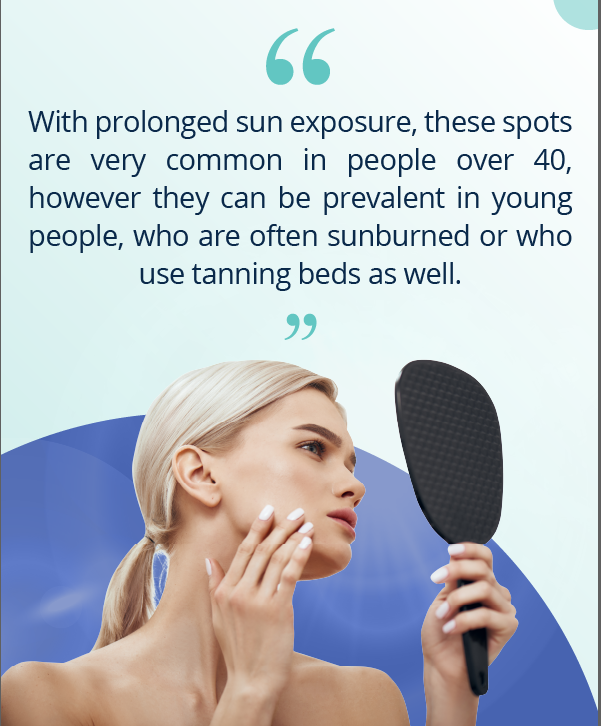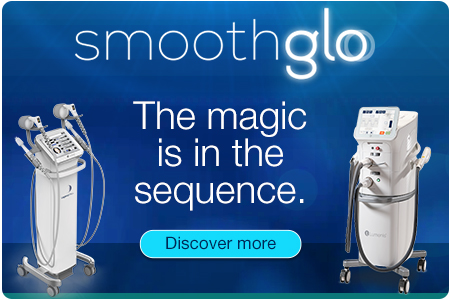First and foremost, if you want to prevent age spots in the future, it’s important to always wear SPF 30 or higher to prevent sun-induced pigment spots.


Remember when your mom told you to wear your sunscreen in the summer months? The reason wasn’t just so you didn’t burn – it’s because she wanted you to protect your skin.
When your skin gains too much sun exposure, whether that be from natural light or UV lights in tanning beds, it begins to age, and flat brown, gray, or black spots emerge on your skin.
Why does this happen?
This happens because sun exposure speeds up the production of melanin in your skin. When the melanin increases in a certain area, the area darkens, which is referred to as hyperpigmentation.
The most common places for this to happen are:
- Your face
- Your chest or décolleté
- The back of your hands
- Your shoulders
- Your upper back
- Your forearms
- Tops of the fee
Who is most likely to develop age spots?
With prolonged sun exposure, these spots are very common in people over 40, however they can be prevalent in young people, who are often sunburned or who use tanning beds as well.
You are even more likely to develop age spots as you get older if you have:
- Previously spent significant time in the sun or in tanning beds
- Fair skin
- Family history of age spots
How are age spots diagnosed?
If you notice age spots after you’ve been in the sun, or as you get older, and are seeking treatment, contact your local healthcare provider or dermatologist to diagnose the age spot and determine what treatment option would be best for you.
How are age spots treated?
Wear your sunscreen
First and foremost, if you want to prevent age spots in the future, it’s important to always wear SPF 30 or higher to prevent sun-induced pigment spots. Additionally, keep out of the sun during the sun’s most intense hours and consider investing in a sunhat or sunglasses to further protect your skin. Swim tops that cover your skin as you swim in the water also prevent sun rays from reaching your skin.
Apply topical creams
A topical cream is a cream that is applied specifically to treat a centralized affected area. Both prescription and non-prescription topical creams may help lighten the age spot over a period of a couple of months.
An example of a prescription topical cream would include:
- Retinoids, such as tretinoin
- Cortisone
- Hydroquinone
Experience SmoothGlo™ by Lumenis
Say “goodbye” to even the most stubborn age spots with this sequential laser treatment. With the synergy of intense pulsed light (IPL) and radiofrequency microneedling, you’ll also address the three most visible signs of aging – tone*, texture, and volume. The best part? Minimal downtime.
Undergo dermabrasion
Your dermatologist will smooth off the outer layers of your skin so new skin can grow in its place and heal in about a week’s time.
Cryotherapy
Using this method, your healthcare provider will use liquid nitrogen to freeze the age spot. If you choose this solution, the skin will peel away and the age spot will fade.
In Conclusion
Whether you spend significant time in the sun without protection or age spots run in the family, age spots don’t necessarily need to be an issue as you get older. With innovative treatment options like SmoothGlo™, wave age spots goodbye and say hello to a younger-looking you.
* Skin tone improvement through treatment of pigmented lesions
PB-00039890 Rev A



